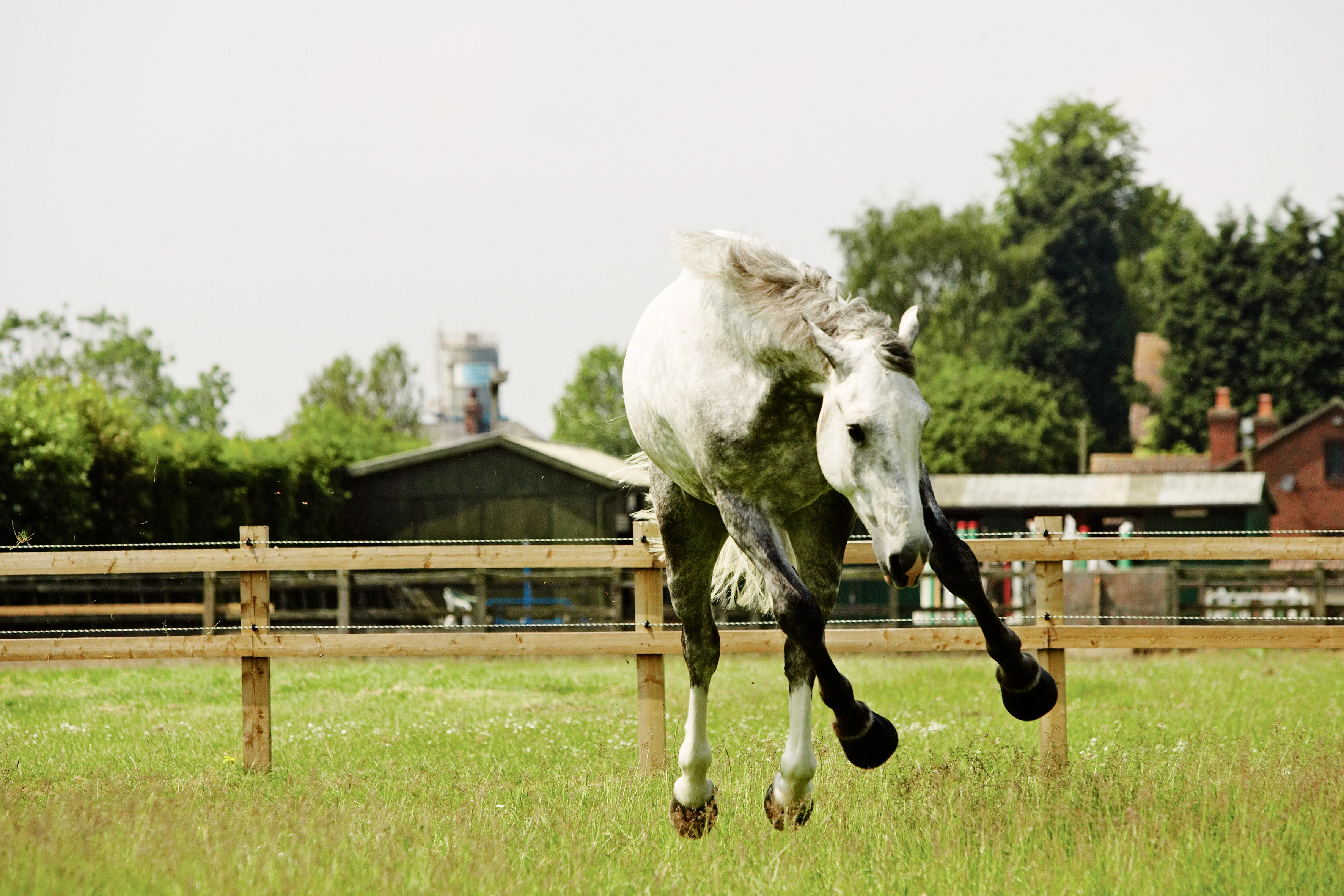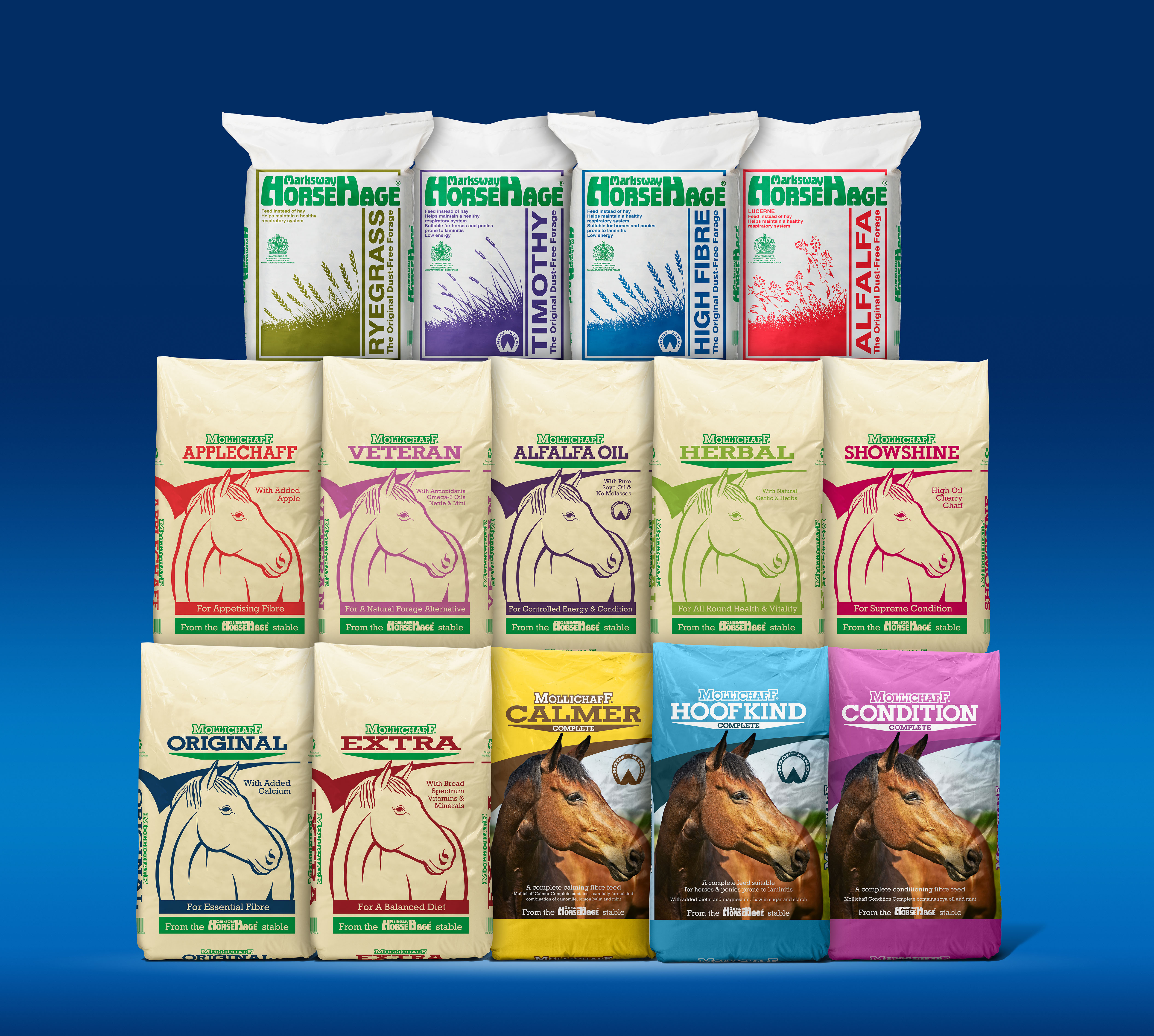Posted: 16th January 2020 | Back to news feed

Feeding horses that tend to be excitable or sharp can prove to be quite a challenge, especially if they drop weight easily, or are particularly fussy. With these individuals, it is equally important to look at their management routines and environment to ensure that any potentially stressful situations are kept to a minimum rather than relying on diet alone. Additionally, check that the fizzy or excitable behaviour is not due to pain whilst being ridden – from poorly fitting tack, or teeth that need attention, for example.

Next, it is important to understand what feed your horse needs for the work he is doing. People commonly over estimate their horses’ workload and feed a product that can be far too high in digestible energy. For example, if your horse is only going for a 30 minute hack two or three times a week, you are likely to experience problems if you are feeding recommended amounts of a cereal-based competition mix! For a sharp horse, a low starch, high fibre product would be much more appropriate in this scenario, and far less likely to result in over-exuberant behaviour.
There is a huge amount of research that suggests diets high in sugar and starch should be avoided for sharp or excitable horses. Sugar has become a buzz word in recent times, with many manufacturers offering unmolassed or sugar-free products. However, it is important to remember that sugar (albeit in moderation) is an essential component in any horse’s diet as it plays an important role in many cellular processes in the body. It is impossible to provide a horse with a sugar-free diet as sugar naturally occurs in various amounts in almost all feeds or forages we would provide our horses with on a daily basis. However, we do know that both sugar and starch provide ‘quick release energy’, so when selecting a bucket feed, look for products that are fibre-based with the bulk of the calories being supplied by either fibre or oil. These slow release energy sources will supply him with calories which will help keep the exuberant behaviour to a minimum whilst also helping with maintaining condition. Common fibre sources include dried grass, alfalfa or straw with the higher calorie product tending to have a higher inclusion of grass or alfalfa, and the lower having a higher straw content. Oil is also a valuable feed source for sharp horses as it is the most calorie dense product we can supply in our horse’s diet, yet all the energy it provides is slow release. If you opt for a product that has low sugar and starch levels, yet has the inclusion of oil and alfalfa, this will mean it supplies a calorie level similar to that of a conditioning mix or cube. Complete fibre-based feeds with low sugar and starch levels are also ideal as they should contain a vitamin and mineral supplement so when fed at the correct rate, will provide all your horse’s nutritional requirements.

Don’t forget your forage!
The bulk of any horse’s diet should be forage, and as many domesticated horses spend large portions of their time stabled (especially over the winter months), this makes it even more important. Depending on how your horse holds its weight, you will need to choose an appropriate calorie hay or haylage. Many owners of sharp horses are wary of feeding a haylage-type product as they feel it can be heating. However, there are bagged forages available that have sugar levels that are significantly lower than that of good quality of hay, and the increased digestibility of this type of forage means that you may be able to decrease the size of your horse’s bucket feed. Choose a variety which has energy levels to suit your horse or pony.
Top Tips for Feeding the Sharp Horse
- Be honest when assessing your horse’s workload, don’t feed high energy feeds unless you need to.
- Allow as much turnout as possible.
- Ensure there are no underlying issues causing the excitable behaviour, ie. pain or anxiety.
- Look for products with a high fibre but low sugar and starch level.
- If your horse loses condition easily, don’t forget the value of oil in the diet.
- Try to supply adlib fibre, even when your horse is stabled (adlib = always available), this minimises the chance of stomach acidity.
- Never underestimate the importance of your net. Supplying calories through forage means you can keep bucket feeds to a minimum.
- Don’t forget that although you may never truly change the personality of a sharp horse, feeding correctly will help to keep the tendency towards exuberant behaviour to a minimum
Talking HorseHage & Mollichaff at Your Riding Club - We want to visit you!
These days we have so much information at our finger tips with computers, smartphones and tablets, but nothing beats a face to face presentation with a real person to whom you can ask questions.
Our sales team has a wealth of experience in equine feeding and would be very happy to come to your riding club or equestrian organisation, free of charge, to talk to you about basic equine nutrition and hopefully provide answers to any feeding queries you may have.
They can also tell you about the different products in our HorseHage and Mollichaff ranges and how they can benefit different types of horses and ponies. We produce forage, chaffs and complete high fibre feeds for all types of equines, including those prone to laminitis.
We will also bring along free Mollichaff samples to give out as well as a raffle prize.
To book a talk for your group, please call the HorseHage & Mollichaff Helpline on 01803 527274.
The Equestrian Index newsfeed is compiled from articles submitted by advertising members and expresses the opinions of those members. Watsons Directories Ltd shall not be held liable for any inaccuracies or mis-statements therein.